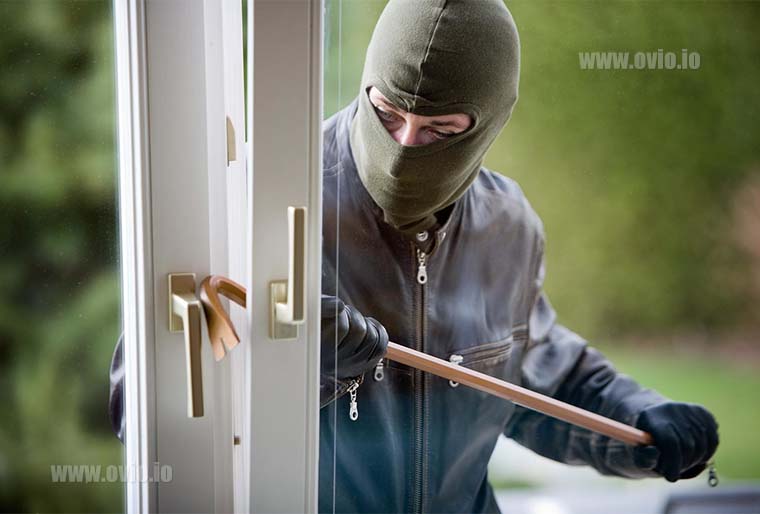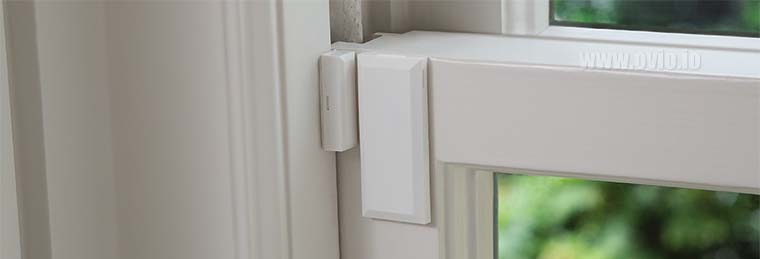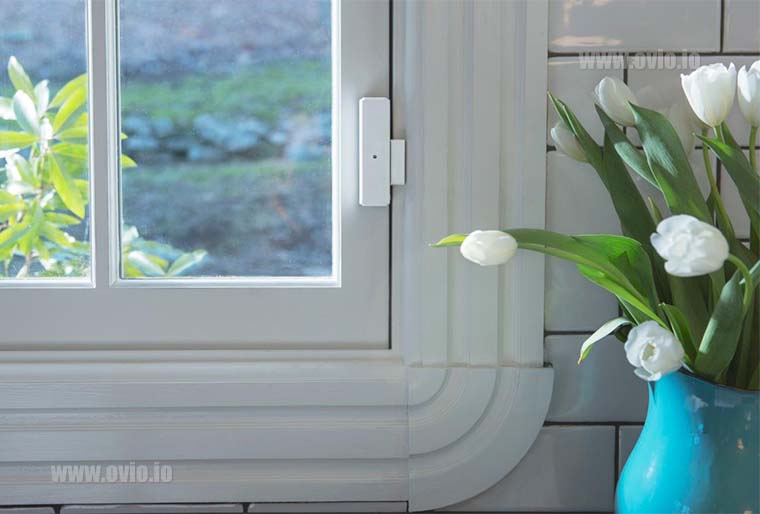
Based on the recent studies, doors and specially windows that can be broken easily, are the most common ways of entry for burglars. Summer is the peak season for burglars, because the weather is warm and doors or windows are open. Your home and loved ones would be safe by securing the sensitive entrance point.
But how can we secure these areas?
Is smart camera a good option for home security?
Or is there any other better choice?
Door sensor is the best option to control doors and windows from breaking burglars into your house.
How does a door sensor work?
These sensors come in two different pieces. One of them attaches to the door or window and the other part fits to the frame.

The sticky part keeps the sensor exactly in position. These two pieces should be placed right next to each other because they cooperate. They work by a magnetic field and when they are separated, for instance when the door or window is opened, they send a signal to the alarm panel and then server will inform you of an uncommon movement at your home.
Why we should use door sensor?

You wouldn’t be informed when burglary is happened, even if you have smart camera in your home. The camera just records the images of burglary and you can see the file when it happened. For improving your home security, you need to install door and window sensors which alarm you immediately of uncommon exit and entrance movement. These sensors have the other advantages as bellow:
Crime Deterrence
The main advantage of door sensor is crime deterrence. If burglars have informed that you have an alarm system in your house, they will shift to another house because sensor deactivation is time consuming and expensive. More addition they don’t want to risk for ringing alarm bell and arresting before running away.
Comfortability
You would sleep more easily and live comfortably, if you are sure that you have done whatever you need for your home and family security, and also all entrance ways are under your control.
Different types of alarm system
There are two type of home alarm system:

- Wireless sensor
- WIFI
- RF
Although the wireless sensors are powered by battery and should be check frequently, but these sensors can be connected to other smart home devices and also can be provided with remote controller.
Wireless system advantages:
- Quick instalment without destruction
- Much more beautiful
- Appropriate for built construction
- Useable for old house
- Hard wire sensors
Contrary to wireless system, hard wire system provides their required data through the connected cable to the smart system.
Hardwire sensor advantages:
- Much cheaper
- Low maintenance services
Where can the sensor be installed, except the door and window?

These sensors can be installed on any devices with open and closed function at your home. For instance: safe box, jewelry box, dangerous cleaners’ cabinets or drug drawers.
Is it necessary to install the sensor in a certain direction?
Ovio wireless system works in all directions. As long as the magnet is less than 5 cm from the other magnet, it doesn’t matter how the sensor is placed.
Is there a place where the sensor can not be installed?
Some metals effect on the sensor’s magnet feature over the time. If you want to install sensors on the metal frame, you need to use a thin plastic buffer between frame and sensors.
Can the burglar deactivate the door sensor?
Although technically it is possible, but a burgle would need a very strong and expensive magnet and should to know it’s accurate installation place.
If someone can do this, it is obvious that he already had come to your home and seen the everything position. Even if he tries to disable the sensors, but the alarm will ring because reed switches (an electrical switch that can works without electricity or magnetic power) are very sensitive. The reed switch causes an alarm when a secondary magnetic power is used from outside and disturb the magnetic fields.

